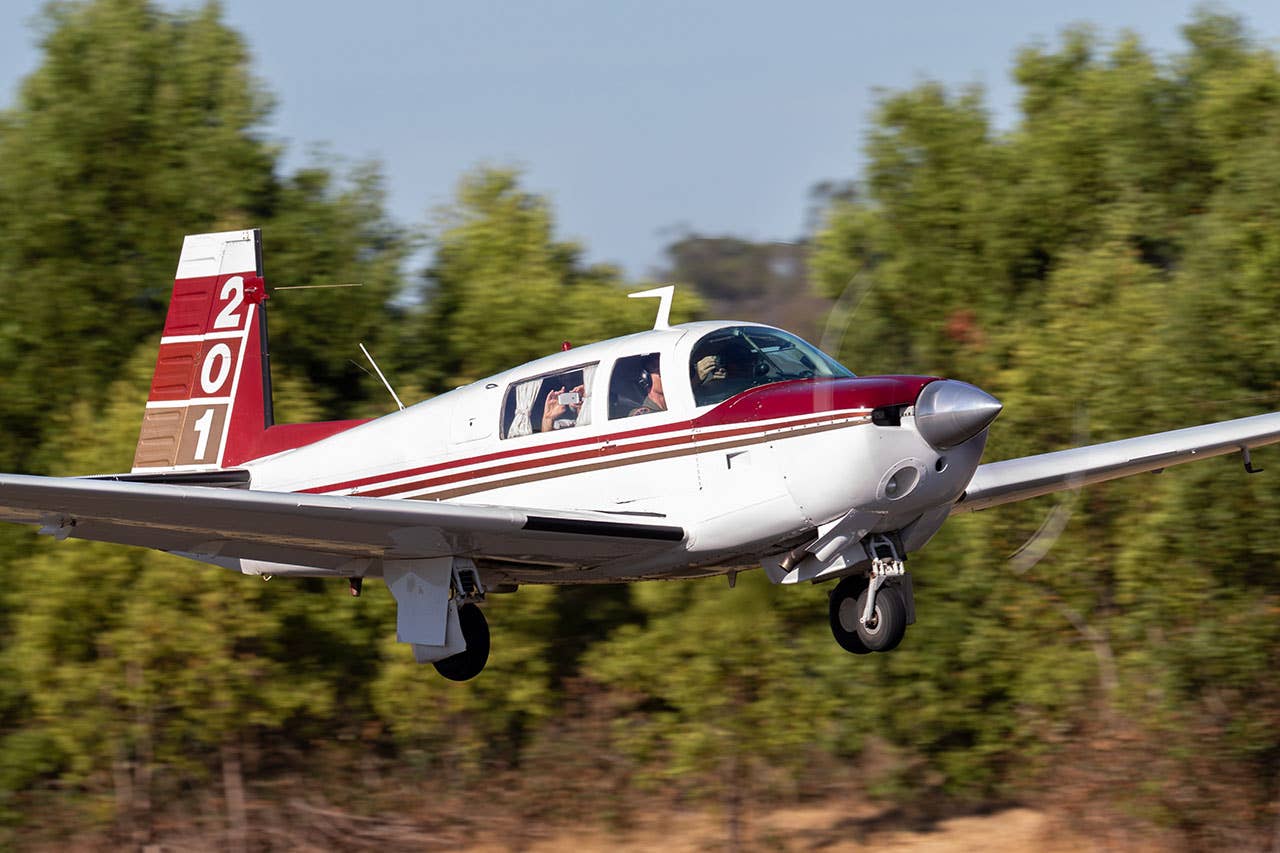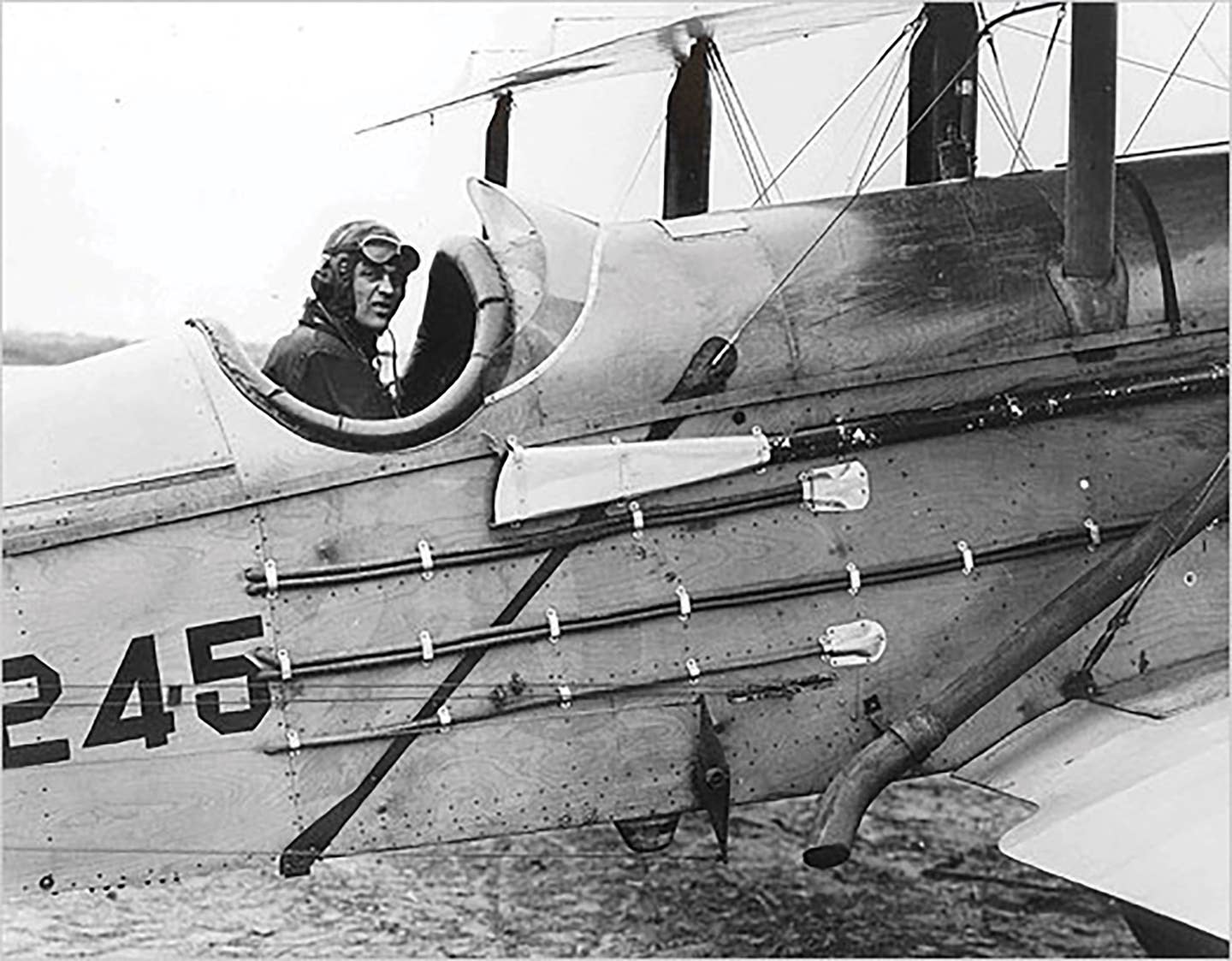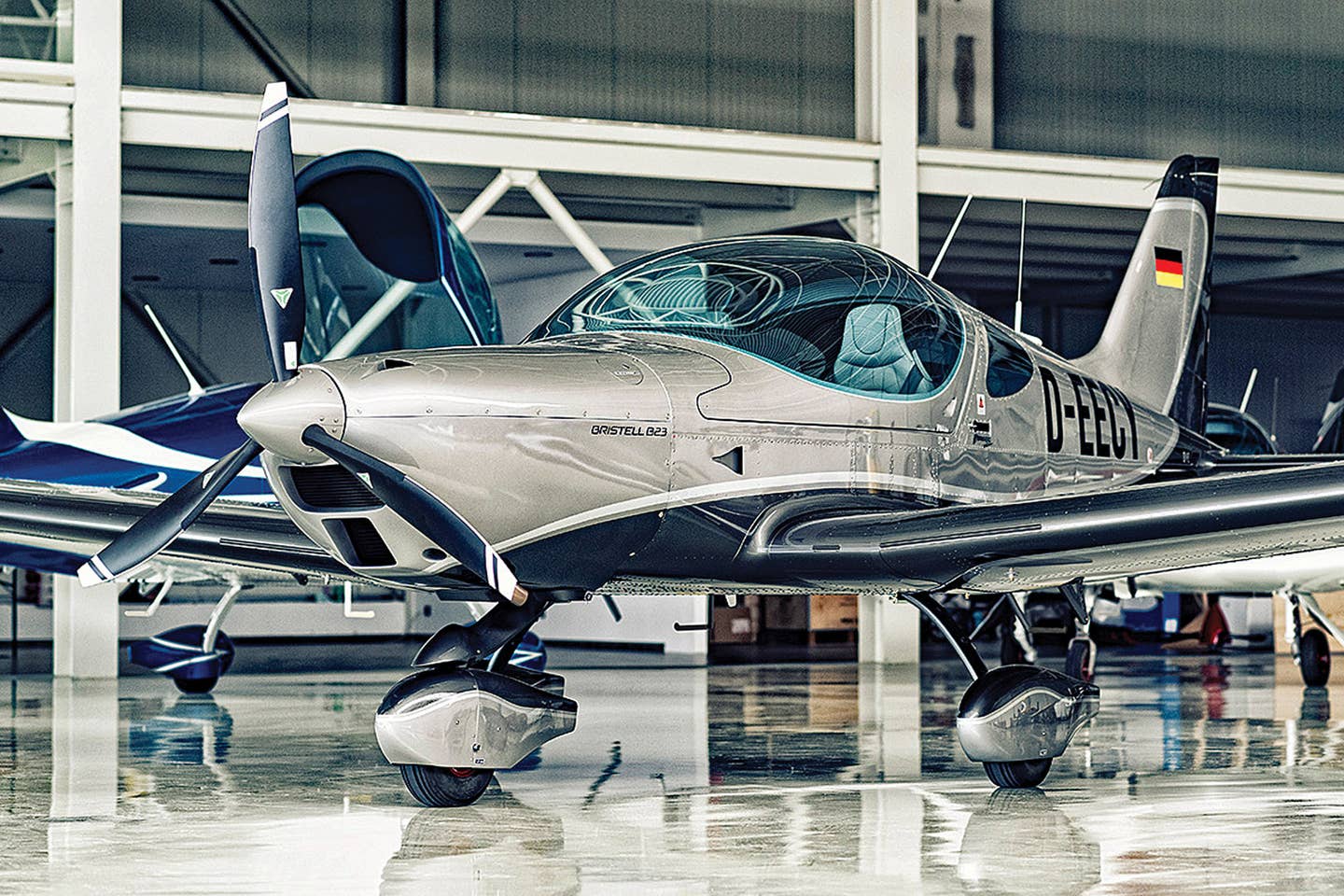Flying A Mooney M20
I’ve flown just about all the metal-wing Mooneys, including the Porsche-powered PFM, and have never found them difficult to operate. They are stable in IMC, responding immediately to control inputs…

M20s are four-seat planes, but the limited space for rear-seat passengers and low payload numbers mean that it’s far from a fill-the-seats-and-top-it-off-and-go kind of a plane.
I've flown just about all the metal-wing Mooneys, including the Porsche-powered PFM, and have never found them difficult to operate. They are stable in IMC, responding immediately to control inputs and predictable when maneuvered. However, Mooneys, as complex, high-performance airplanes, do require study and practice to learn how best to use them.
Prior to 1969, the top of the airspeed indicator's green arc was set at 150 mph, so the 200-hp models would cruise in the yellow caution range at low altitude; the Vno was raised to 175 mph in 1969. Mooneys don't like to slow down; on some models, maximum gear-down speed is 120 mph (104 knots), and the flaps-extended limit is 125 mph (109 knots). Later models of the M20J 201 carried a 132-knot gear-extension limit, and there is a 107-knot limitation for gear retraction. Even the big-engine M20M has to slow below 140 knots to put the gear down (it can fly up to 165 knots once the gear is extended), so it's no wonder Precise Flight speed brakes are almost always installed.
The point is, airspeed control is an essential element of Mooney flying. Gear up and power off, the airplanes have an 11.46-to-1 glide ratio with the propeller windmilling in high pitch. The 167 square feet of wing area sits well into ground effect, so when the M20J manual says to use 65 to 71 knots for landing approach, pay attention. Extra speed increases landing distance exponentially. Flap extension or retraction requires immediate trim adjustment.
Boarding a Mooney, particularly the short-body models, is done by loading the pilot first, sliding the co-pilot seat forward, installing the rear passengers, and then sliding the co-pilot seat aft to seat that person. The door is latched AFTER being pulled closed; slamming it doesn't work. With the short-cabin Mooneys, it's possible to reach back and push on the baggage compartment door to check that it's latched.

Subscribe to Our Newsletter
Get the latest Plane & Pilot Magazine stories delivered directly to your inbox






